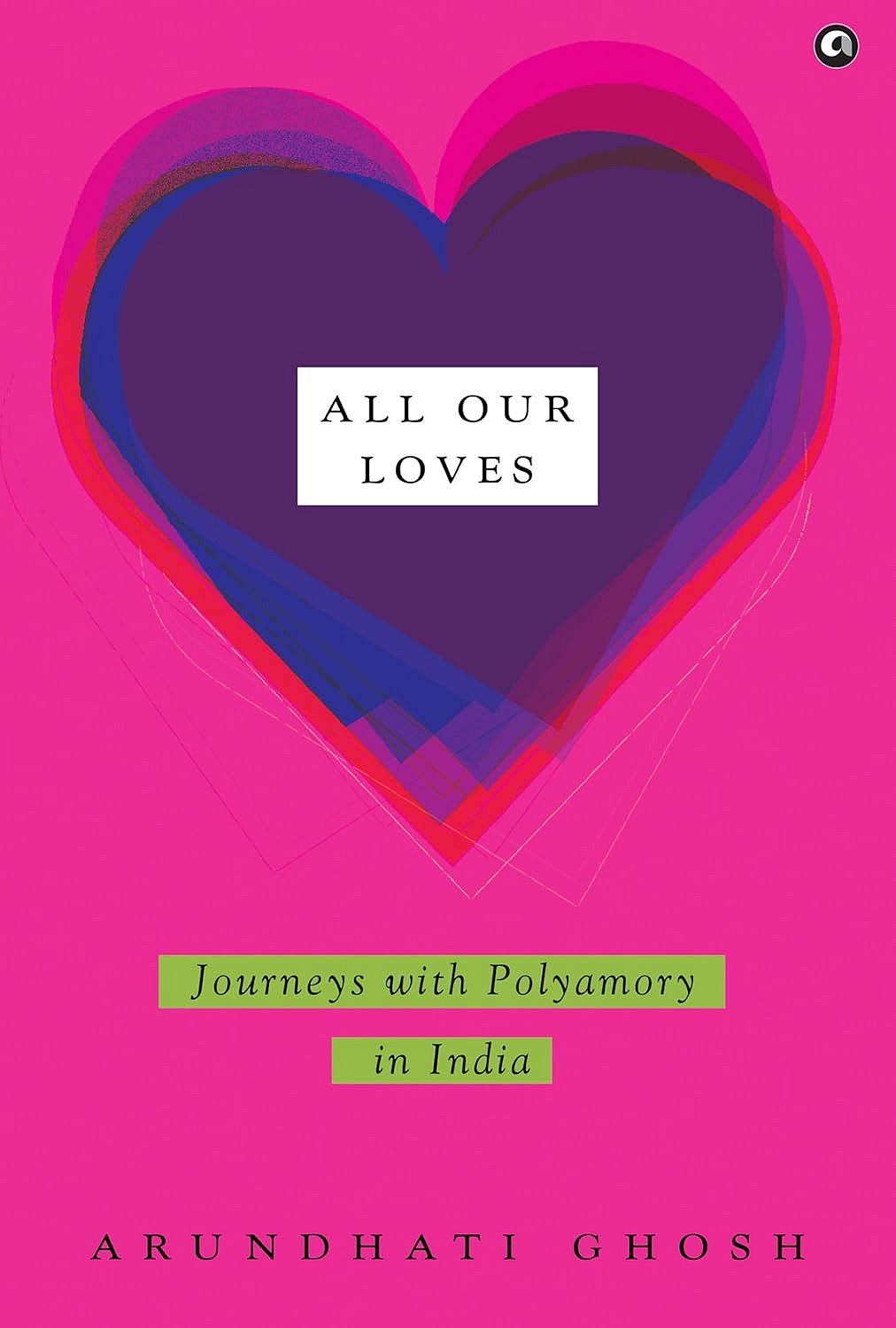Love All

Space: the final frontier, says the introductory narrator of Star Trek. In similar fashion, the writer of All Our Loves: Journeys with Polyamory in India, Arundhati Ghosh, considers the normalisation of monoamory (the practice of being in a romantic or sexual relationship with a single partner at a time) to be the final frontier in the struggle for queer and feminist liberation, both globally and in India. A writer, cultural practitioner and social activist, Ghosh’s book is in part a narration of her own journey with polyamory, and in part a comprehensive look at the various aspects of the practice itself and that of various polyamorous lives in India.
All Our Loves is a book of great promise. It comes at a time when discussions around polyamory are increasing in culture and on social media, both as sincere portrayals and as mocking parodies. It comes at a time when an honest portrayal of polyamory is needed, both to dispel myths around the practice, and to destigmatise it in the eyes of the reader. And the book delivers on this in spades.
Ghosh traces many theories regarding our cultural obsession with monoamory. Divided into 16 chapters across three sections, All Our Loves thus begins with an exploration of polyamory in different cultures across the world, both in pre-colonial and post-colonial times, followed by a look at the misapprehensions about the practice, the different kinds of polyamory that are practiced and why, its many challenges, and even a guide to red flags and green flags of polyamorous practice. Interspersed throughout are interviews with polyamorous people in India, giving the reader insight into the vast spectrum of polyamorous practices being undertaken in India.
2025 In Review
12 Dec 2025 - Vol 04 | Issue 51
Words and scenes in retrospect
Perhaps the most engaging section of the book is the final one, where Ghosh examines the legal frameworks that will need to shift radically to accommodate polyamorous people. This is because we so rarely think of a polyamorous space as one in which we make and sustain our own legalities, by making rules and boundaries and observing them.
The section ‘Holding Space: Support Structures for Polyamorous People’ is significant in its examination of support structures beyond the conventional natal nuclear family or the one obtained through marriage. That is the most uplifting part of the book: a reminder that families can be formed in many ways beyond the normative.
This idea is illustrated in a section in which Ghosh talks to young adults, most of whom are queer and who are experimenting with ways of being and loving. It’s a section filled with hope, both for young people and for their parents who may be struggling to understand this new way of living.
The book can on occasion feel somewhat dry and didactic—almost like a textbook or an instruction manual, especially where it discusses how polyamorous lives may be navigated when challenges such as jealousy and relationships with a monoamorous partner arise. Structure-wise, it also would have been more engaging and livelier if Ghosh’s own story was woven continuously throughout the chapters—as seen, for example, in Angela Saini’s The Patriarchs: How Men Came to Rule—rather than largely siloed off into specialised chapters. The section dealing with mental health practitioners could have been as strong as the legal section; it is much shorter and does not offer as many solutions.
In my conversation with Ghosh, we both agreed that certain perspectives are missing from the book. One, for example, is the fact that polyamory is quite common in some sections of the kink community in India; there is no exploration of why there is an overlap between the two in the book. There is a much broader exploration of heterosexual relationships in the book due to Ghosh’s own experience with them; the perspectives of polyamorous people from non-metro cities, a non-upper middle-class background, and those who speak languages other than the ones Ghosh is conversant in are absent; and polyamory and disability is one overlap that is notably missing.
However, as Ghosh says, this book is only the beginning of the conversation. There is no doubt that it is timely and that it enhances the ongoing debates around polyamory, as part of the feminist and queer liberation movements.

